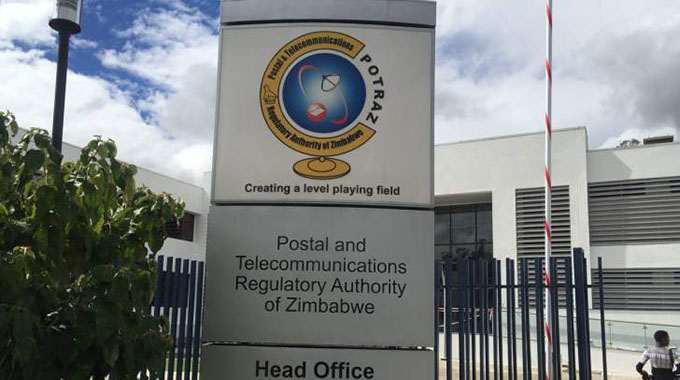Telecoms revenue jumps eightfold

Enacy Mapakame
Business Reporter
Total mobile network revenue for 2020 ballooned 748 percent to $26,3 billion, from $3,1 billion recorded in 2019 amidst rising operating costs.
According to the Postal and Telecommunications Regulatory Authority of Zimbabwe (POTRAZ) annual sector performance report for 2020, mobile network operating costs amounted to $11,7 billion, up from $2,11 billion recorded in 2019 on the back of rising cost of doing business due to inflationary pressures.
Figures from the regulator show that voice is still the main revenue contributor for the mobile networks, as mobile voice traffic grew on the back of an increase in on-net traffic due to promotional offerings.
Of the total mobile network operators’ (MNOs) revenue, voice accounted for 45,9 percent although it was a marginal decline from 48 percent contribution in 2019.
However, the contribution of internet and data increased to 30,2 percent from 28,8 percent due to the growth in usage. SMS contribution remained flat 11 percent.
Of the achieved revenue, Econet continued to command over 80 percent of total mobile network revenues while NetOne and Telecel accounted for 17 percent and 2 percent respectively. However, in the year under review, Econet’s market share declined by 2,1 percent while Telecel also lost revenue market share by 0,8 percent whereas NetOne gained 2,9 percent.
During the year under review, total investment by mobile network operators in 2020 was $248,1 million as compared to $70,2 million invested in 2019. On the other hand, fixed network generated a total revenue of $3,132 billion in 2020 up from $480 million recorded in 2019 as operating costs amounted to $2,7 billion from $420 million.
Unlike with mobile network operators, data services has remained the biggest revenue contributor at 64,2 percent, which was an increase from 49,7 percent recorded in the prior year.
“This phenomenon is consistent with the exponential growth of data as consumption becomes more data-centric as people adapt to the new normal arising out of the Covid-19 pandemic whereby most business activities and work are now conducted online,” said Potraz.
Fixed voice was the second largest contributor at 31,8 percent, a decline from 41,5 percent in 2019 as fixed voice traffic also went down during the year on the back of a decline in active fixed telephony subscriptions.
According to the regulator, the scaling down of corporate operations due to Covid-19 also contributed to the decline in fixed voice traffic, as the bulk of traffic comes from corporate lines.
Internet Access Providers (IAP) generated a total of $9,3 billion in 2020 from $971 million recorded in the prior year. Overall, the sector recorded total annual revenue of $38,8 billion from $4,5 billion in 2019.
As the economy recovers spurred by increased activity and anticipated increased agriculture production, demand for telecommunication services is also anticipated to grow.
“The anticipated increase in economic activity will create more employment opportunities and increase disposable incomes, which will help boost aggregate demand.
“Resultantly, we are likely to witness a surge in demand for communication services, in particular data and courier volumes as consumers adapt to the new normal of life.
“Hence, digitalisation is likely to be scaled up, with operators repositioning themselves by upgrading and automating their networks to enhance agility to deliver new services/ applications to meet fast changing and versatile consumer demands,” said Potraz.








Comments